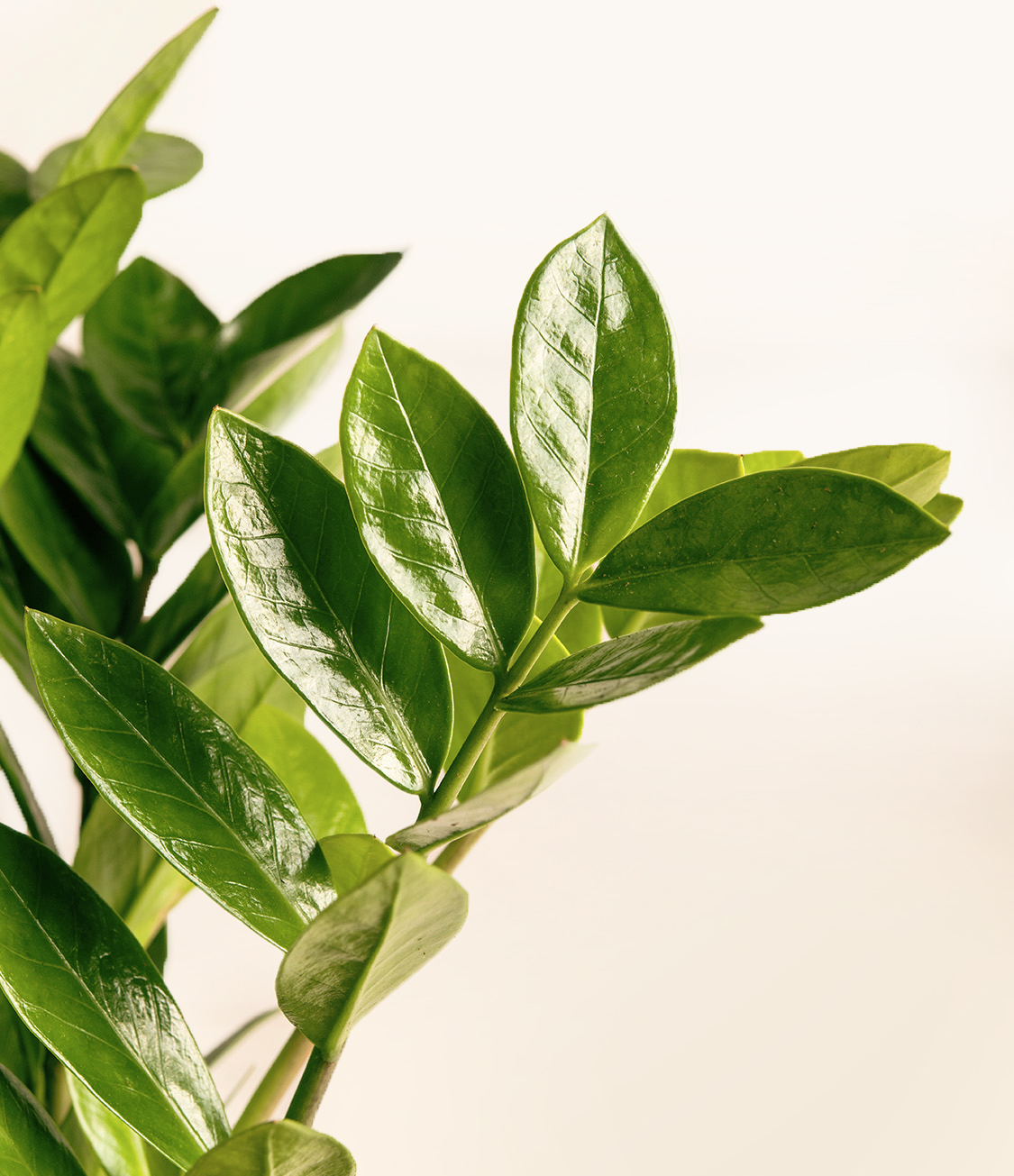Plant care library / ZZ Plant
How to Care for ZZ Plant
Shop this plantAbout ZZ Plant
Centuries old, the beloved tropical ZZ Plant, also known as Zanzibar Gem, grows wild in the dry soils of East Africa, making this curious evergreen hard to kill. ZZ Plant grows slowly and steadily, reaching up to three feet tall. It thrives under almost any condition, and is thus a favorite in every plant collection - especially for the brown thumbs and forgetful among us.
Other common names
- Aroid Palm
- Emerald Palm
- Eternity Plant
- Zanzibar Gem
- Zuzu Plant
How Often Should I Water My ZZ Plant?
With easyplant, watering your ZZ Plant is simple. Make sure to check the easyplant reservoir once every two months and fill it when empty, and you're all set!
ZZ Plant Light Needs
ZZ Plant grows best in a well lit space with medium to bright light and can adapt to low light or spaces without natural light as well.
ZZ Plant Plant Care
ZZ Plant is very tolerant and hard to kill, making it an easy-care plant that will quickly bounce back from any mishap.
To help it grow optimally and evenly, occasionally dust the leaves and rotate the pot by a ¼ turn once a month.
How Big Do ZZ Plant Plants Grow?
ZZ Plant grows slowly and steadily, reaching between one to three feet tall. Provided with enough light and sufficient soil, ZZ plants will sprout a number of new stems each spring and summer before reaching maturity in 3-5 years. During fall and winter, or other low-light conditions, ZZ plants enter a hibernation phase and effectively cease growth.
Temperature & Humidity
Like most plants, the ZZ plant is best acclimated to temperatures between 60 and 75 degrees Fahrenheit. Due to their tropical origins, they also prefer humidity levels in the neighborhood of 50%. In short, they thrive in ordinary room temperature conditions. However, it’s worth noting very high levels of humidity can prevent growth, while the very low levels of an arid climate can cause leaf crisping.
Are ZZ Plant Toxic for Pets & Kids?
ZZ plants may be mildly toxic if ingested, so be sure to keep away from curious children and pets. ZZ plants are full of calcium oxalate in the form of tiny crystals with jagged edges. Exposure is generally a very minor risk that will not cause lasting damage. On the skin, they can cause minor rash symptoms, while in the eyes they can produce burning and redness similar to shampoo. Ingesting them may cause mild discomfort or vomiting.
Troubleshooting Common Problems with ZZ Plant
If you notice a stem becoming weak or droopy, cut to remove the entire stem and relocate the pot to a more brightly lit area. If you notice stems getting too long, prune them down to your preferred shape and relocate the pot to a less brightly lit area. If you notice the leaves begin to curl, relocate the pot to a less brightly lit location.
Frequently Asked Questions about ZZ Plant Plant
- What are the benefits of a ZZ plant?In a list of zz plant benefits, there are essentially two primary attributes to consider. First and foremost, this sort of leafy evergreen provides dynamic sprouts which look healthy and rich year-round. That makes them great for adding a lively touch to many types of smaller- to medium-sized spaces. Of almost equal importance, these plants are great at improving indoor air quality. They even remove small amounts of household cleaning agents from the air.
- How long can a ZZ plant live?The ZZ plant is not an annual or semi-annual plant, it’s an evergreen shrub that can have a surprisingly long lifespan. It only takes three to five years for the ZZ plant to move from sprout to maturity. Yet, with appropriate care, a ZZ plant can live for decades. As a houseplant, the most common cause of death for a ZZ plant isn’t neglect, but overwatering.
- Is a ZZ plant easy to care for?How do I care for a ZZ plant? In many cases, the answer is as simple as remembering it’s there. Because the ZZ plant is drought tolerant, is not particularly picky about soil, and handles many kinds of lighting conditions gracefully. Though doing so can accelerate growth, it also doesn’t require regular fertilizing. Owing to its ability to thrive in most ordinary room conditions, it’s fair to say that it’s easy to care for a ZZ plant.
